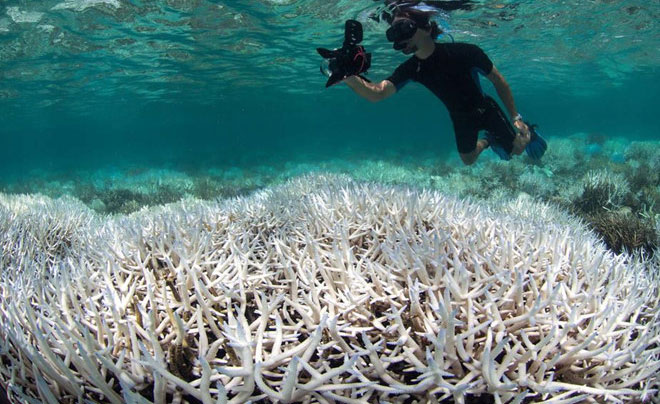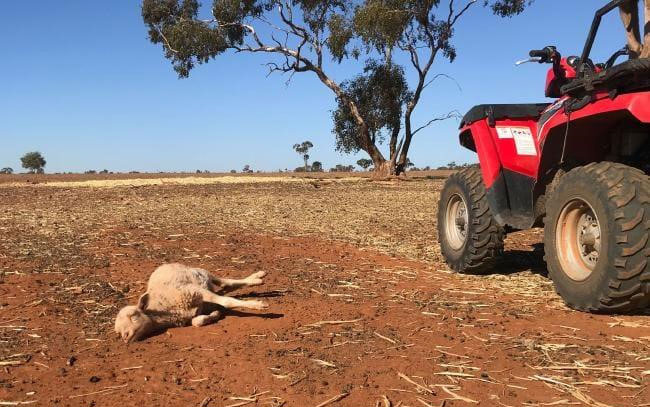Severe weather destroys 50% of Australian marine ecosystems
Natural disasters such as storms, cyclones, droughts and heat waves have destroyed nearly 50% of marine ecosystems in Australia, many places where natural life cannot recover.
According to Guardian, CSIRO's research, the Commonwealth Scientific and Industrial Research Organization, found that nearly 50% of Australia's marine ecosystems were destroyed in the period from 2011 to 2017.
CSIRO's research shows that the 8,000km stretch of water along Australia's coastline is negatively affected by extreme weather events, such as heat waves, super typhoons, tornadoes and droughts.

Large-scale dead corals at the Great Barrier Reef.(Photo: NSW).
Victims of extreme weather events are often coral reefs, kelp, mangroves and marine species. In some cases, these weather phenomena have permanently destroyed the ecosystem.
Research shows that natural disasters exacerbate the negative effects of human-induced climate change on the environment. For example, heat waves combined with the effects of global warming have led to less time for species to adapt.
"Some studies have shown that it takes up to 15 years for the environment to recover itself from such events (disaster)," said Professor Russ Babcock, CSIRO's research leader. Mr. Babcock stressed that during the time needed to recover, the environment is likely to continue to suffer from new natural disasters, further exacerbating the destruction of ecosystems.

Australia experienced many severe droughts in recent years.(Photo: AP).
CSIRO's research takes a lot of evidence of the widespread damage that occurs throughout Australia. In particular, typical kelp in the Western waters of Australia did not recover after a hot sea of record in 2011, or mass death phenomenon in the world's largest Great Barrier Reef since 2016.
The long-term impact of natural disasters not only on a specific species, but also leads to negative changes of all marine species, when there is a change in the natural food chain, Babcock said.
Due to the geographical and climate characteristics, Australia is one of the most heavily affected countries of climate change . Since 1910, the average temperature in Australia has increased by 1.8 degrees Celsius. With the current rate of increase in heat, the temperature is expected to increase by 5 degrees Celsius in this country by 2090, causing natural disasters. Severe storms, heat waves, droughts, floods.
- The major Asian cities will be "unprecedented" extreme weather.
- Extreme weather: reality of a hot world
- Vietnam marine ecosystem is seriously degraded
- New hope for marine ecosystems
- What if the sea is no longer salty?
- Australia established the world's largest marine park
- La Nina weather phenomenon has reached its peak
- Video: The colorful world on the ocean floor
- Australia's simple waste treatment is both effective and economical
- Da Nang: Preserving coral reefs and marine ecosystems
- Unmanned aircraft take photos of marine ecosystems
- Marine status forecasters are widely used in India
- Plan to set up an Antarctic marine sanctuary
- Opening ceremony of the 5th brand marine forum
 Is the magnetic North Pole shift dangerous to humanity?
Is the magnetic North Pole shift dangerous to humanity? Washington legalizes the recycling of human bodies into fertilizer
Washington legalizes the recycling of human bodies into fertilizer Lightning stone - the mysterious guest
Lightning stone - the mysterious guest Stunned by the mysterious sunset, strange appearance
Stunned by the mysterious sunset, strange appearance